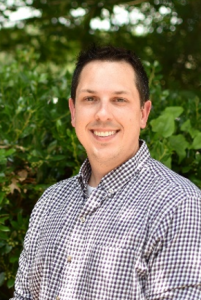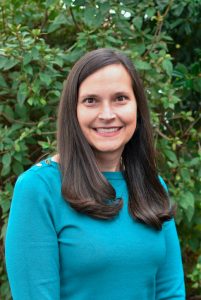Dr. Erik Willis, PhD, and his Observations for Wellness and Learning Lab have received an R01 grant from the U.S. National Institutes of Health to evaluate the accuracy of wearable devices in measuring children’s electronic screen use.This four-year project is expected to provide a more precise, objective, and cost-effective measure of electronic screen use needed to understand and evaluate the effects of electronic screens on children’s health.

Dr. Willis is a research scientist with the UNC Center for Health Promotion and Disease Prevention (HPDP) and works with the Children’s Healthy Weight Research Group. Most recently, Willis formed the Observations for Wellness and Learning Lab (OWL-Lab) to develop knowledge that can help researchers create methods to study health and wellness across the lifespan.
The use of digital media and electronic screens (e.g., tablets and smartphones) has grown substantially over the past decade, especially among children. Research suggests that electronic screen use may offer both risks (e.g., poor sleep quality, obesity) and benefits (e.g., early learning, social contact) to the overall well-being of children. However, current methods of studying children’s electronic screen use, which include parental reports from interviews or diaries, can’t fully capture the on-demand and interactive nature of screen use with the daily activities of children and their families. A less invasive, and possibly more precise, method to study this behavior is using wearable devices.
Wearable devices, along with advanced machine learning methods, allow researchers to understand how people behave in their everyday routines and lives. These devices have been used to understand other health behaviors, such as physical activity, sedentary time, and sleep. There is a growing field of research using wearable devices to measure electronic screen exposure in adults. But there is a lack of development in wearable devices and machine learning techniques to study screen time among children.
“We don’t know for sure if it’s really the time kids spend watching screens that’s contributing to the risks that we think may be associated with screen time,” said Dr. Willis. “Is it screen time or is it the behaviors that are happening with screen time, like poor nutrition when kids are watching television or the time they spend sitting? What if the content is educational? With the tools we currently have, we can’t tease out if screen time itself is really the problem.”
Dr. Willis and his team will collaborate with experts in machine learning at the University of North Carolina at Chapel Hill, early media exposure at Georgetown University, and biomedical sensor technology at the University of Freiburg to evaluate the accuracy of machine learning methods with wearable devices for screen and non-screen activities among children 3-8 years old. The research team is currently building a laboratory at the HPDP building to conduct the study, and for other observational projects conducted by HPDP researchers. The lab will have two observation areas: a childcare center and a home living room. While in the lab, children’s wearable devices will record their technology use and researchers will also observe their activity levels. The team will then compare the accuracy of estimations from the wearable devices to an established tool, called the Comprehensive Assessment of Family Media Exposure (CAFE) tool. By comparing data from the wearable devices, observations, and the CAFE tool, researchers will be able to evaluate the accuracy of wearable devices in measuring children’s screen time.

“We are excited to continue working with the HPDP Leadership team to create a cozy and warm space for participants to enjoy their time at the OWL-Lab, while we make great strides in wellness research!” said Dr. Regan Burney, PhD, Research Project Director of Implementation at the Children’s Healthy Weight Research Group.
Over the next four years, the results from this project will help researchers program wearable devices to better estimate screen time in children’s everyday lives and the impacts technology use has on their health outcomes.
“If this works out, it could change the way that we measure kids’ electronic screen use,” said Dr. Willis. “It would be like going from questionnaires to accelerometers and Fitbits to measure physical activity. All of the science around electronic screen use could be reevaluated using a more precise wearable.”
Erik Willis, PhD, joined HPDP in 2019 as a research scientist with the Go NAPSACC project, part of the Children’s Healthy Weight Research Group. Prior to joining HPDP, he received his doctorate in exercise physiology from the University of Kansas and a Master of Public Health in epidemiology and biostatistics from Yale University and completed a postdoctoral fellowship with the National Cancer Institute.
Regan Burney, PhD, joined HPDP in 2014 with the Children’s Healthy Weight Research Group where she has managed multiple research projects. Prior to joining HPDP, she received her doctorate and Master’s of Science degrees in human development and family studies from the University of North Carolina at Greensboro.
